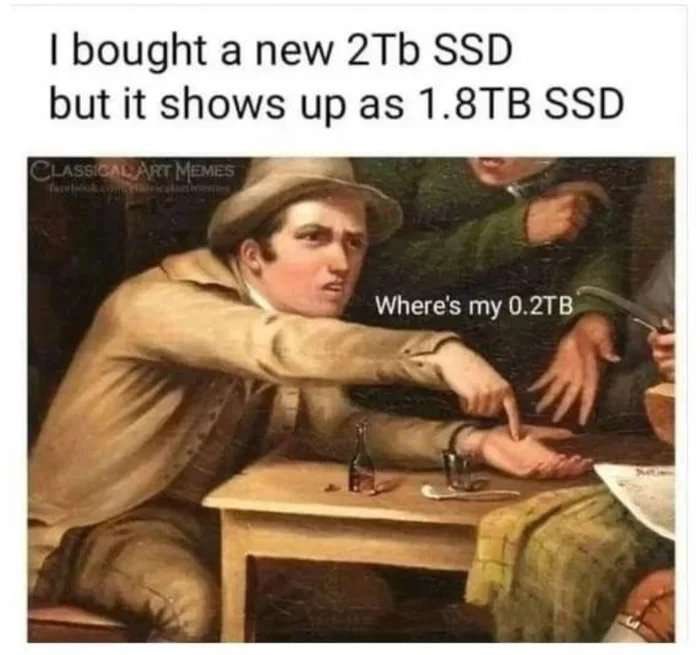this post was submitted on 27 Nov 2023
890 points (96.8% liked)
memes
12109 readers
2363 users here now
Community rules
1. Be civil
No trolling, bigotry or other insulting / annoying behaviour
2. No politics
This is non-politics community. For political memes please go to !politicalmemes@lemmy.world
3. No recent reposts
Check for reposts when posting a meme, you can only repost after 1 month
4. No bots
No bots without the express approval of the mods or the admins
5. No Spam/Ads
No advertisements or spam. This is an instance rule and the only way to live.
A collection of some classic Lemmy memes for your enjoyment
Sister communities
- !tenforward@lemmy.world : Star Trek memes, chat and shitposts
- !lemmyshitpost@lemmy.world : Lemmy Shitposts, anything and everything goes.
- !linuxmemes@lemmy.world : Linux themed memes
- !comicstrips@lemmy.world : for those who love comic stories.
founded 2 years ago
MODERATORS
you are viewing a single comment's thread
view the rest of the comments
view the rest of the comments

Base 2 based displays and calling them kilobytes date back to the 1960s. Way before the byte was standardised to be eight bits (and according to network engineers it still isn't you still see new RFCs using "octet").
Granted though harddisks seem to have been base-10 based from the very beginning, with the IBM 350 storing five million 6-bit bytes. Window's history isn't in that kind of hardware though but CP/M and DOS, and
dirdisplayed in base 2 from the beginning (page 10):Then, speaking of operating systems with actual harddrive support: In Unix
ls -lhseems to be universally base-2 based (GNU has--sito switch which I think noone ever uses).-h(and-k) are non-standard, you won't find them in POSIX (default is to print raw number of bytes, no units).